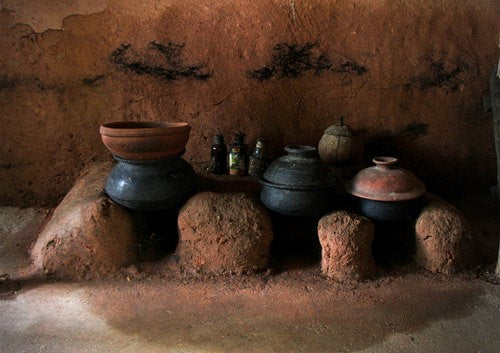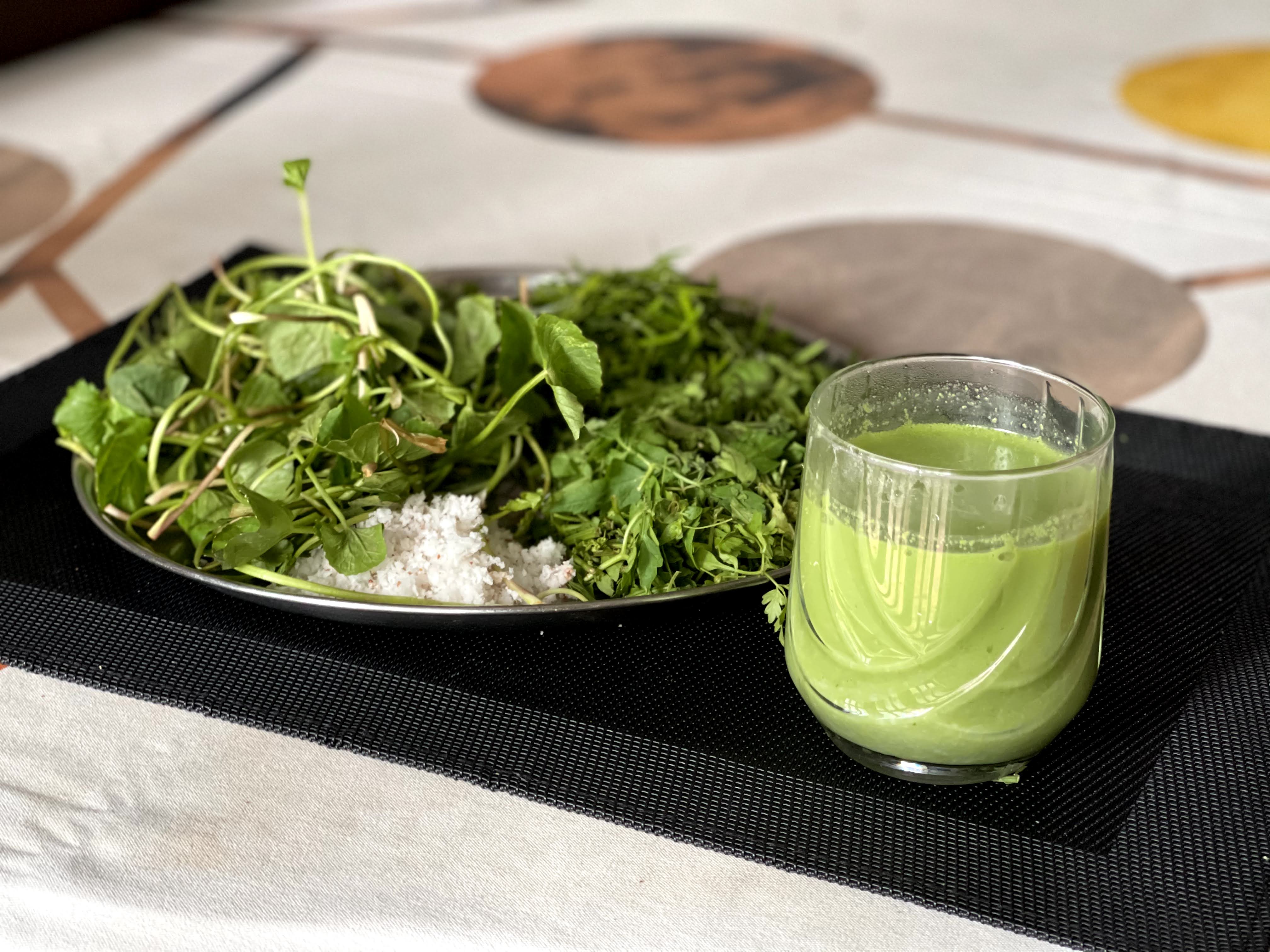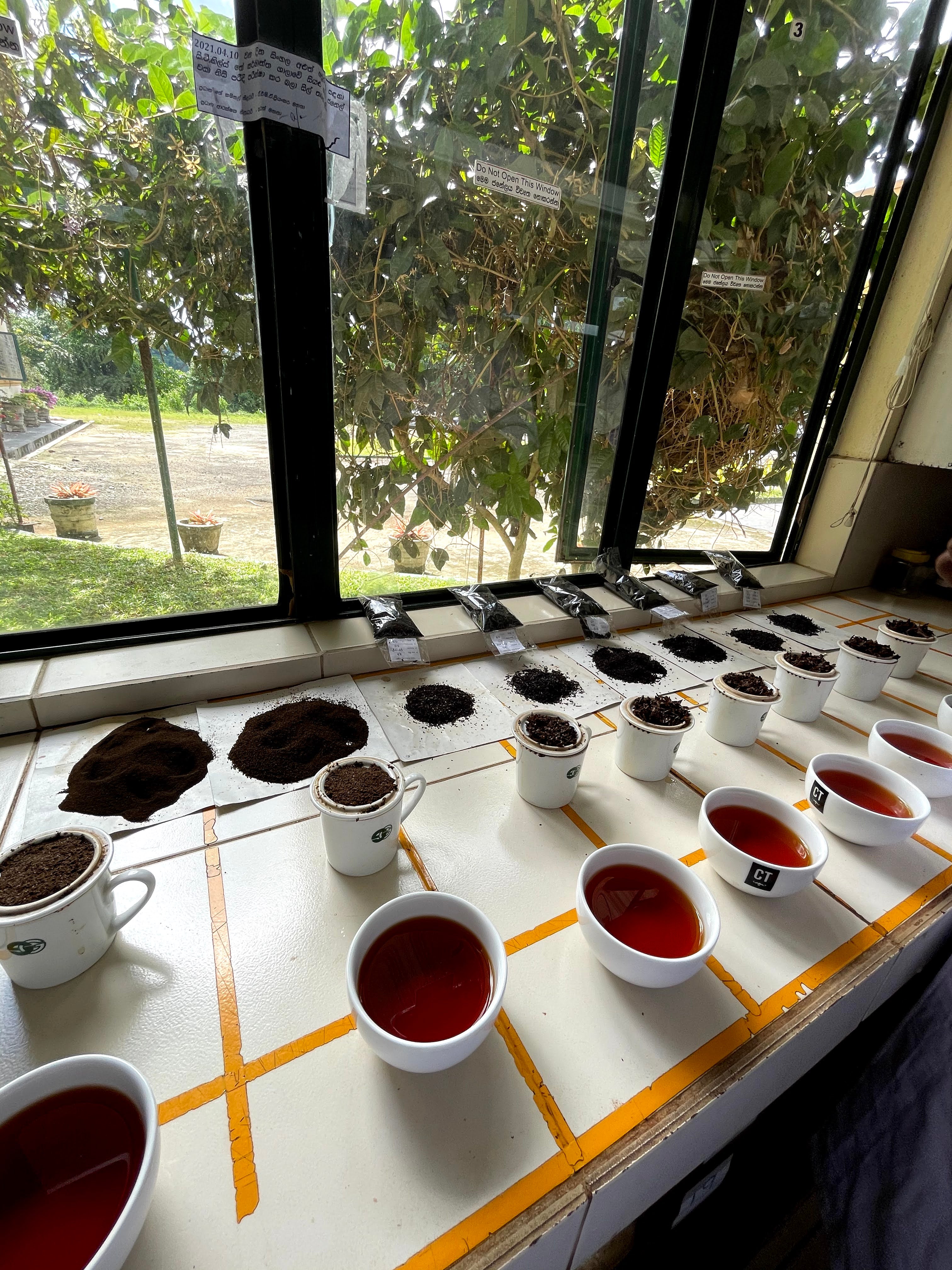
Interview with Sujatha Amarasiri
When my daughter, Sajani, first told me she wanted to share Sri Lanka’s Kola Kanda in a new way, I was touched. Not only did she want to reinterpret the classic Sri Lankan dish, but she also wanted to share it with people across the world and in the United States. When Sajani told me my Kola Kanda recipe would be the basis for Kola Goodies’ Super Green Latte, I knew it would be a hit!
I’m proud that Sajani was inspired to introduce Kola Goodies to the western world, where organic green food is in high demand. The green lifestyle movement as chemical-free, locally-produced, and free of genetically modified ingredients has been in need of a reliable alternative to ultra-caffeinated beverages, and I believe Kola Goodies will help everyone who tries it.
Even though Kola Goodies has already explained what Kola Kanda is and why Sri Lankans have been drinking it for ages, I thought it would be beneficial to share my original recipe that inspired Sajani to create Kola Goodies. I first learned to make this traditional recipe for Kola Kanda from my mother — Sajani’s grandmother — though my recipe is a little bit more modernized than her original.

When I was growing up from the early 1950’s through the late 1970’s, we didn't have grinders, blenders, and other appliances most homes now have in Sri Lanka. At that time, most kitchens relied on firewood hearths, called a “Dara Lipa”. A Dara Lipa is a hearth made of clay and set up in the kitchen of traditional Sri Lankan homes. We would put firewood, dried coconut leaves, coconut husks, and coconut shells in the Dara Lipa and light it with matches, along with a little help from some kerosene oil.

My mother used to grind ingredients with a wooden mortar and pestle, called a wangediya molgaha. She used it to crush ingredients like ginger, garlic, and cumin seeds for curries. To make our family’s Kola Kanda as my mother did, the ingredients are placed in the chalice-shaped wooden mortar, and the pestle is used to crush the spices and grains.
It was only after I grew up and had been making Kola Kanda manually by hand that kerosene oil and gas cookers became available, and now we can make the same recipe with much more ease. However, I never forgot what I learned from my mother and how to make my family homemade food. To see my amma’s Kola Kanda recipe transform from a manual labor of love made with a wangediya, to a more convenient form I could make for Sajani with a blender, to Sajani’s adaptation of it as a powdered version she calls the “Super Green Latte,” is nothing short of heartwarming. It is a lovely tribute to our family and our tradition of making Kola Kanda from one generation to the next.
I am honored to share how I make Kola Kanda for my family.
Kola Kanda Recipe
Yield: Four Servings
Herbs
Hathawariya (Asparagous cemosus)
Welpenela (Cardiospermum halicacabum)
Karapincha (Murraya Koenigii)-curry leaves
Gotu Kola (Centella asiatica)
Polpala (Aerva lanata)
Mukunuwenna (Alternanthera sessilis)
Monarakudumbiya (Vernonia cinerea)
Ingredients
1 Cup Raw Red Rice or Brown Rice
2 Cups Mixed Herbs from above, roughly chopped (you may use one herb or a mixture of several)
2 Fistfuls of Coconut, ideally freshly grated
2 Cups Water1 to 2 Slices Ginger, finely chopped
6 Cloves Garlic, finely chopped
Salt, as needed
Equipment
Large pot with lid/Rice cooker
Blender
Cheesecloth/Fine Mesh Sieve
INSTRUCTIONS
- Rinse the rice well and add to a large pot or rice cooker. Add the chopped ginger and garlic.
- Simmer, covered, over medium heat for 25 minutes, or according to your rice cooker’s instructions, or until the rice breaks up and the mixture is thick.
- Add the handfuls of freshly grated coconut or a can of coconut milk and two cups of the mixed herbs to a blender with the rice mixture. Blend with 2 Cups of water, strain into a new saucepan with cheesecloth or a fine mesh sieve, and put the rice mixture caught in the cheesecloth back into the blender. Blend just for a few seconds to crush the remaining rice grains and add it back to the strained mixture to make it a thick porridge.
- Cook over low heat, stirring constantly. Add salt to taste and remove from heat to avoid destroying the nutrients from the herbs.
- Kola Kanda is usually served steaming hot at breakfast with a piece of jaggery (palm sugar), so feel free to serve your Kola Kanda with jaggery as well!




Leave a comment
This site is protected by hCaptcha and the hCaptcha Privacy Policy and Terms of Service apply.